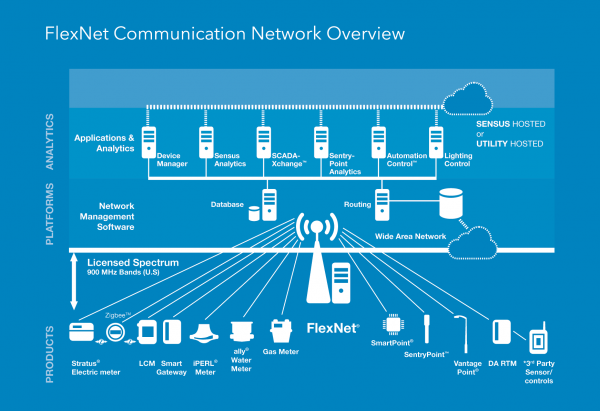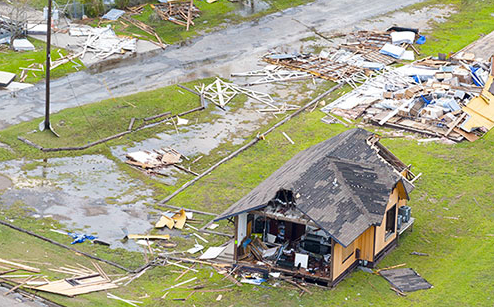Sensus FlexNet Communication Network Prepares Utilities for the Unexpected
Published on by Water Network Research, Official research team of The Water Network in Technology
Real-time data helps utilities restore service after hurricanes.

The 2017 Atlantic hurricane season, which ends November 30, will be remembered as one of the top ten most active in recorded history. Millions of Americans were left without critical services as storms devastated the continental United States, the U.S. Virgin Islands and Puerto Rico.
With the season now over, we can look back at how Hurricanes Harvey, Irma and Maria caused catastrophic damage and left utilities racing to restore services for their customers. With the FlexNet® communication network from Sensus, a Xylem brand, utilities can better prepare for the havoc Mother Nature wreaks with a resilient, reliable system for quickly getting their infrastructure back up and running.
“After a natural disaster, all eyes focus on repairing infrastructure and rapidly restoring power, water and other essential services—often a matter of life or death,” said Randolph Wheatley, vice president of marketing of Sensus. “The FlexNet system gives utilities a resilient network that can help them weather the devastating effects of a storm and quickly get their customers the services they need.”
FlexNet is a two-way communications highway that delivers data over a private network. It gives utilities real-time alerts on system-wide issues and outages. Further, its point-to-multipoint architecture offers a critical view of a utility’s infrastructure and provides strategic insights to organize and increase efficiencies in disaster relief efforts.
Getting Corpus Christi Back Up and Running
Hurricane Harvey hit the Texas Gulf Coast as a category four storm with winds up to 130 miles per hour late in the evening Friday, August 25th. Nueces Electric Cooperative, the only deregulated electric co-op in Texas and only one of a handful in the United States, reported that 45 percent of its customers had lost power—which left approximately 8,200 homes and businesses in the dark. By Sunday afternoon, less than 48 hours after landfall, crews had restored power to every customer—even those who had evacuated and were not at home to report an outage.
“The FlexNet communication system sent us timely and accurate outage information so we were able to send our crews to the exact trouble spot and restore customer service efficiently,” said Nueces Electric Cooperative IT Director Sergey Seryogin. “We take pride in an effective disaster recovery plan for our customers and the FlexNet system is the strongest, most robust setup for outage management.”

Source: Sensus
History of Restoration
The FlexNet system has a long history of helping utilities restore services and playing an integral part in disaster recovery efforts. In 2012, Superstorm Sandy tested the true resiliency of the FlexNet system in Stafford Township and Seaside Heights, New Jersey. In response to the more than 2,260 homes damaged, these municipalities used FlexNet to prioritize relief initiatives.
While restoration efforts took weeks and required assistance from utility crews across the U.S. and Canada, Stafford Township and Seaside Heights proactively assessed the data from FlexNet and sent support to the most impacted areas, greatly improving disaster relief efficiencies across the service areas.
Source: Sensus
Media
Taxonomy
- Water Supply
- Data Management
- Water Supply
- Water Utility
- Infrastructure
- Utility Management
- Infrastructure Management
- Data & Analysis
- green infrastructure